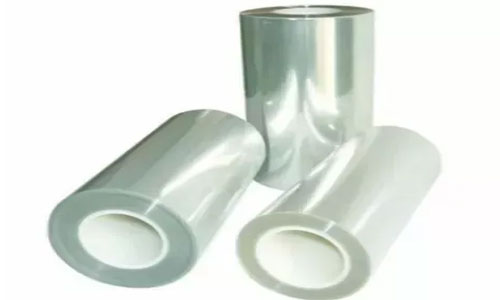In the die-cutting process, for different die-cutting products to choose different materials, the last push "common die-cutting material basic knowledge (2)", we introduce the representative products of three types of materials: release materials, adhesive materials and conductive shielding materials. Today, We will continue to introduce the representative products of five categories of materials, such as surface protection materials, sealing/buffer series materials, insulation and flame retardant materials, waterproof dust discharge materials and backlight module materials.
Surface protection materials:
Surface protection series materials mainly include protective film (PET, PE, PP film, modified PP, silicone, acrylic adhesive, anti-static), electrostatic adsorption film.

▲ Protective film
The main factors affecting the viscosity of surface protection materials are as follows:
Wetting: pressure sensitive adhesive can only achieve close contact with the surface of the adhesive with good wetting, creating conditions for physical chemistry;
Molecular movement and diffusion: pressure sensitive adhesive molecules will move to the surface of the adhesive material, when the distance bond between the two is less than 5A, physical and chemical bonding will occur;
Penetration: The adhesive layer flows and penetrates into the groove and gap under a certain pressure, so that the contact area of the two increases, which is the mechanical bonding force between the adhesive and the adhesive material.
The main factors affecting the selection of surface protection materials are as follows:
Different surfaces of materials require different stickiness;
Similar surfaces but different materials may also require different stickiness;
The processing steps determine the viscosity, generally bending, stamping, cutting, drilling, thermoforming;
Reasonable matching of thickness and viscosity;
Tensile strength and elongation of the protective film;
Fully tested.
Seal/buffer series materials
Sealing/buffering series materials mainly include EVA, PORON and other shockproof foam.

▲ Material type
Polyurethane foam
Excellent compressive deformation resistance; Excellent resilience; Stress dispersion; Chemical, moisture, UV resistance; Flexibility in harsh environments; Easy to form a variety of complex die cutting parts.
Mainly used in mobile phones and other handheld devices, LCD TV modules, electronic products wall gasket, vibration damping, shock absorption cushion, sound cavity diversion, industrial instrument panel gasket, gap filling, etc.
▲ The advantages and disadvantages of each brand foam
▲ Foam selection criteria
Insulating flame-retardant series materials
Insulating and flame retardant materials mainly include PC, PET, PP, Dupont paper, fast bus sheet and so on.
▲ Flame retardant standard
▲ Flame retardant rating
Waterproof and dustproof series material
Waterproof and dustproof mainly include mesh (HY waterproof, not waterproof), metal mesh, PC mesh, non-woven fabric (non-woven fabric)
▲ Abnormal analysis of mesh
OCA
OCA adhesives include super glue, glue, hot melt adhesive, AB adhesive, tape, etc.
▲ Structure of the touch module
OCA Main manufacturers:
3M, high market share;
Hitachi, designated by Apple, mainly by the original factory and each TP factory cooperation;
New TAC, the material quality is the same as 3M and Hitachi, but the market promotion is not good;
Mitsubishi, medium quality, use a big problem;
Nitto, mainly sold with its ITO film binding;
Water, general quality, the main customers for small factories.
OCA Notes:
Clean and clean surface (ethanol, acetone, isopropyl alcohol);
Contact pressure (at least 15psi);
Retention time (1-3 days at room temperature before testing);
Surface temperature (the operating temperature must be higher than 15 ° C, the selection of tape must consider the transport and use of the temperature).
Common adverse conditions of OCA:
The main defects of OCA bonding process include foreign body, dandruff, dirt, air bubble, alignment deviation, etc.
▲ Foreign body
▲ Dirt
▲ Shavings
▲ Bubble
Causes of bubbles:
The uneven surface of the fit causes delamination, resulting in open bubbles;
There is residue on the adhesive surface, resulting in bubbles;
Air remains in the lamination layer, forming a true pure bubble;
The bubbles are caused by DITO/CG warpage and the waveness of OCA itself
In SUMMARY:
The above content from the product type, application, influencing factors and other aspects of surface protection materials, sealing/buffer series materials, insulation and flame retardant materials, waterproof dust materials and backlight module materials in the five categories of materials, its representative product application, characteristics and processes are introduced, I hope that our sharing can be beneficial to everyone.
Contact: Pamela
Phone: +86 189 6365 3253
E-mail: info@industryprocess.com
Whatsapp:+86 189 6365 3253
Add: Yajing Industrial Park, No. 59 Shuangjing Street, Weiting Town, Suzhou Industrial Park
We chat
